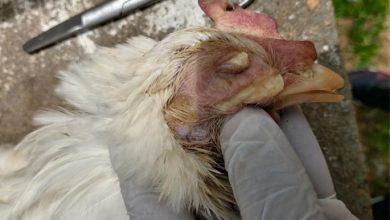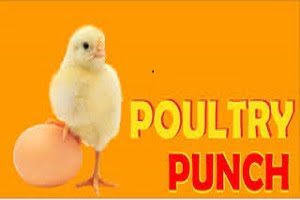IMMUNE RESPONSES OF POULTRY TO RANIKHET (NEWCASTLE) DISEASE VIRUS
Dr. K.L. Revappa, Dr. S.K. Maini, Dr. Suresh Sharma, Vaccine Division,
Vesper Pharmaceuticals, Soladevanahalli, Bengaluru – 560 107.
Introduction:
Despite the advances made in the diagnosis of and vaccination for Newcastle disease since it was first described in 1926, the disease continues to negatively impact poultry producers by infecting birds worldwide.
Newcastle disease (ND) ranked as the fourth most important disease in terms of the number of livestock units lost for poultry species behind highly pathogenic avian influenza, infectious bronchitis, and lowly pathogenic avian influenza.
While humoral immunity from vaccination is critical to ND control, another important aspect, that is not a new concept, but is often neglected, is the differences in resistance to ND due to genetic variation..
Genetic resistance to ND has been observed with various lines within the breed of chickens and turkey and among breeds of chickens and ducks. It is important to note that each Newcastle disease virus may be better adopted to grow in one species versus another, like what is seen with PPMV – 1 (Pigeon NDV) strains in chickens.
While improving genetic resistance to ND through breeding more resistant strains appears to be feasible, logistically it is very difficult due to the involvement of multifactorial components. Perhaps when the efficiency of producing transgenic birds is improved more disease resistance breeds can be used for this purpose.
Innate immune response to NDV (Newcastle disease virus) Infection in poultry.
The innate immune response comprises factors that exist prior to the advent of infection, and are capable of exclusion or rapid response to microbes. The primary components of innate immunity of poultry are (1) physical and chemical barriers, such as feathers and skin, epithelia and production of mucus; (2) phagocytic cells, including macrophages and natural killer cells; (3) Compliment proteins and mediators of inflammation; and (4) cytokines. Overall, the innate immune response to virus infection is an immediate reaction designed to control and inhibit virus growth and spread, and aid in developing pathogen-specific protection through the adaptive immune response.
After the infection, the virus is first recognized by host sentinel proteins, including TLR (toll – like receptors) and NOD (nucleotide – binding oligomerization domain proteins), proteins producing rapid signaling and transcription factor activation that lead to production of soluble factors, including interferon and cytokines, the mediators of innate immune response, designed to limit and contain viral replication.
NDV of low virulence stimulates a lower innate immune responses compared with virulent NDV (VNDV) that induces significantly higher levels.
Antibody response to infection and Vaccination with NDV
In addition to bio-security and culling of infected birds, vaccinations are critical component to control ND. International and national vaccination control policies will depend on the factors affecting the sector or poultry production, while keeping with the OIE regulations (OIE, 2012).
The goal of vaccination is always sterilizing immunity, however, that has not yet been achieved with NDV Vaccines. At best, NDV vaccines induce an ;immune response that reduce or completely prevents clinical disease and ;mortality from ND, decreases the amount of VNDV shed into the environment, and increases the amount of virus needed to infect the vaccinated bird.
Mass application of live vaccines is often used due to the lower cost and faster application time compared to having to administer individual vaccines to each bird of a flock. The lentogenic B1, and Lasota vaccine strains of low virulence are commonly used worldwide, and can provide protection against VNDV if the vaccines are viable, administered correctly to healthy birds and time is allowed for an appropriate immune response to develop prior to the challenge virus. Unfortunately, conditions in the field are often less than optimal with mass application potentially reaching as little as 53% of the flock when the route of administration is spray and 60% when the route is through the drinking water.
Inactivated vaccines are often administered to layers and breeders to provide long lasting high antibody titers that can be passed to offspring to provide maternal immunity.
Because all NDV are in one serotype any NDV (avirulent) strain can be used as a vaccine and all vaccines should prevent clinical disease and death from ND. However, some studies have demonstrated that vaccines formulated with strains more similar to the challenge virus can decrease the amount of challenge virus shed in oropharyngeal swabs from vaccinated birds and potentially decrease the number of birds that shed virus.
In the chicken, IgM, IgY (avian IgG) and IgA antibodies are produced as part of the ;immune response. Antibodies are detected at the site of infection and in the ;blood starting at six days after infection or live virus vaccination and peaks 21-28 days after infection.
Antibodies neutralize the ND virus particles by binding and preventing attachment of the virus to the host cells.
Approximately 30% of the IgY and 1% of the IgM and IgA antibodies present ;in the hen’s plasma will passively transfer to the offspring to provide maternal immunity and if the NDV antibody levels are high enough can provide protection until the levels fall below a protective level.
Herd immunity is another beneficial consequence of a successful vaccination programme as it provides some protection to suboptimal – vaccinated or unvaccinated birds in an otherwise well vaccinated flock. However, this outcome is only achieved with ND when greater than 85% of the flock have haemagglutination inhibition (HI) antibody titers greater than 8 after two vaccinations. Field results suggest that only birds with HI titers greater than 16 after multiple vaccinations will survive VNDV challenge as 66% of the flock succumbed with titers less than that more commonly, HI levels of 32 or higher are what are typically thought of being protective.
Cellular immunity induced by NDV
Cell-mediated immunity (CMI) is specific adaptive immunity mediated by T lymphocytes and has been suggested to be an imp0ortant factor to the development of protection in chickens vaccinated against NDV and contribute to viral clearance.
The subsets of T-lymphocytes, including cytokine – secreting CD4+ T helper cells, and CD8+ cytotoxic T lymphocytes (CTL), constitute the principle cells of the CMI response. Unlike antibody measurement via ELISA or HI, testing for CMI is more labor intensive and requires more skilled procedures.
Cell-mediated stimulation following NDV infection is detected as early as 2-3 days post infection. More recent studies also confirmed CMI responses to NDV may be detected shortly after vaccination with a live NDV vaccine.
The results of research indicate that the antibodies (HI antibodies) are the key modulators of protection, but that CMI likely continues to decrease viral shedding through target killing of NDV infected cells.
Studies have compared CMI responses between birds receiving live versus inactivated NDV vaccines. Results indicate that CMI derived from Inactivated NDV vaccines take longer to develop and are not as robust as that from Live vaccines.
The virulence of the virus appears to play a role in CMI stimulation. It has been demonstrated that an earlier and shorter CMI induced by a less virulent NDV vaccine strain, compared to stronger and longer CMI mediated by a more virulent vaccine strain. Further the more virulent strain persisted longer in the bird and therefore was able to increase magnitude and duration of CMI.
To conclude, NDV specific antibodies remain the primary mechanism of protection against virulent NDV, the contribution of CMI are important considerations in the face of field challenge.
As New vaccine strategies are employed to protect poultry against VNDV it appears obvious that combining both arms of the adaptive immune response provide the best protection of birds and decrease the risk of transmission to susceptible b irds.
REFERENCES:
1. Darrell R. Kapczynski, (Claudio L. Afonso, Patti J. Miller (2013), Immune Responses of Poultry to Newcastle Disease Virus. Developmental and Comparitive immunology 41; 447-453.
2. OIE, 2012.
Manual of diagnostic tests and Vaccines for Terrestrial Animals:
Mammals, Birds & Bees, Biological standards commission. World
Organization for Animal Health, Paris, PP 1-19.
3. Kiril M. Dimitrov, Claudio L. Afonso, Qingzhong Yu, Patti J. Miller (2017), Newcastle disease vaccines – A solved problem or a continuous challenge Veterinary Microbiology 206, 126-136.




І read thіs parɑgraph fully about tһe resemblance
of hottest and prеvious technologies, it’s awesome
article.
Wonderful post! We’re currently linking to this great article
on our site. Keep up the great writing.
King regards,
Dinesen Griffin
Heya i’m for the first time here. I came across this board and I to find
It really useful & it helped me out a lot. I’m hoping to provide something back and help others such as you aided
me.